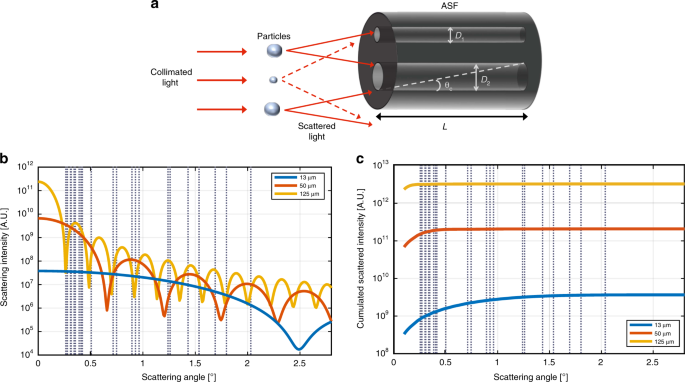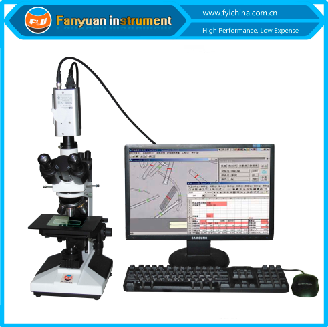Key Factors When Evaluating an Optical Fibre Diameter Analyser
Key Factors When Evaluating an Optical Fibre Diameter Analyser
Blog Article
Optimize Your Fiber Optic Efficiency: Comprehending Optical Fibre Size Analyser Modern Technology
The performance of fibre optic systems is critically influenced by the accuracy of their size, a factor commonly overlooked in the quest of optimal signal integrity. Comprehending the technology behind optical fibre diameter analysers exposes the complex equilibrium between measurement precision and manufacturing high quality. These devices not only boost conformity with industry criteria yet also provide real-time understandings that can preemptively resolve prospective concerns. The ramifications of their usage extend beyond simple measurement; they can fundamentally alter the landscape of fiber optic efficiency. What factors should one consider to harness their full capacity?
Significance of Optical Fiber Diameter
The diameter of optical fibre plays an important duty in establishing the performance and effectiveness of interaction systems. On the other hand, smaller sized sizes have a tendency to support fewer settings, which can enhance signal quality and decrease crosstalk.

Moreover, comprehending the size's effects can cause cost financial savings by decreasing the need for signal amplification and repeaters in substantial networks (optical fibre diameter analyser). In verdict, the importance of optical fiber size can not be overemphasized, as it straight impacts the overall efficiency and dependability of modern communication systems

Just How Diameter Influences Signal Quality
Signal top quality in optical fibre systems pivots substantially on the size of the fiber. The size affects several vital specifications, consisting of depletion, bandwidth, and modal dispersion. A smaller diameter can cause higher attenuation prices, resulting in signal loss as light trips through the fiber. This attenuation can jeopardize the stability of the transmitted data, causing a decline in signal quality, especially over long ranges.
Alternatively, larger diameters usually enable improved light capture and decreased modal diffusion, boosting signal clarity. In multimode fibres, a bigger core diameter can sustain multiple light modes, yet it may additionally introduce intermodal dispersion, which can deteriorate signal top quality. Choosing the optimal fibre size is vital for achieving the wanted performance in specific applications.
Moreover, the interaction in between the fibre diameter and the wavelength of the light utilized plays a crucial duty in identifying the effective transmission distance and overall signal stability. Therefore, understanding how fibre size affects signal high quality is essential for network designers and designers striving to optimize optical fiber systems for dependable, high-speed data transmission.
Overview of Size Analyser Modern Technology
In lots of optical fibre production procedures, accurate dimension of fibre size is important for guaranteeing regular efficiency and top quality (optical fibre diameter analyser). Diameter analysers are advanced tools created to analyze the physical dimensions of optical fibers with high precision. They utilize innovative optical and laser innovations to gauge the diameter, ovality, and concentricity of the fiber, hence giving vital information for quality control
These analysers can run in-line throughout the manufacturing procedure or as component of off-line testing procedures. In-line systems allow real-time surveillance, enabling makers to change specifications immediately, consequently keeping optimum manufacturing problems. Off-line analysers, on the various other hand, give extensive analyses of sets, making certain that any type of deviations from defined tolerances are identified and resolved.
Size analysers substantially add to the reduction of flaws in optical fibres, boosting total item dependability. By consistently measuring essential specifications, these modern technologies help with conformity with market requirements and specifications. As the demand for high-performance optical fibres proceeds to rise, the function of size analysers becomes progressively essential in achieving the wanted high quality and efficiency criteria in fiber optic systems.
Key Attributes of Fibre Size Analysers
Although different versions of fibre diameter analysers exist, they frequently share a number of key features that enhance their capability and dependability. Among the most significant attributes is high-resolution dimension abilities, which make sure specific diameter readings, important for keeping high quality control in fibre manufacturing. Furthermore, lots of analysers incorporate advanced optical sensors made to find minute variations in fibre size, hence providing invaluable data for process optimization.
Another crucial function is real-time surveillance, permitting drivers to get immediate feedback on fiber size throughout the production procedure (optical fibre diameter analyser). This capability helps with fast adjustments and lowers the chance of defects. Many analysers likewise come geared up with straightforward internet user interfaces, making it possible for drivers to easily navigate through data and settings results
Additionally, robust information storage and evaluation functionalities are essential for tracking historic performance fads and guaranteeing compliance with sector requirements. Some models also supply connectivity choices for integration into existing production control systems, improving overall operational performance. Mobile and small styles enable for flexible deployment within production settings, ensuring that high quality guarantee processes are seamless and reliable. These attributes jointly contribute to the efficiency of fibre size analysers in enhancing fibre optic performance.
Finest Practices for Fibre Optimization

First, routine calibration of optical fibre size analysers is necessary. This makes certain precise dimensions and reduces possible disparities that might affect performance. Next off, keeping a clean working environment is crucial; dust and pollutants can result in indicate degradation.
Additionally, it is vital to choose fibres that satisfy details application needs. This includes assessing factors such as depletion, bandwidth, and ecological problems. Appropriate setup strategies must additionally be abided by, consisting of staying clear of sharp bends and too much stress, which can endanger fiber stability.
Furthermore, employing innovative surveillance systems can promote real-time performance assessments, allowing prompt identification of concerns. Regular screening and upkeep must be carried out to guarantee that fibers remain within optimum operational specifications.
Finally, training personnel on the most recent fiber optimization modern technologies and approaches will this page enhance their ability to apply efficient strategies. By following these ideal practices, companies can dramatically enhance the performance and life-span of their optical fiber systems, making certain efficient communication and data transfer.
Final Thought
Finally, the combination of optical fiber diameter analyser modern technology is vital for making the most of fibre optic performance. By making sure accurate measurements of fiber dimensions, these analysers substantially enhance signal Full Report top quality and reduce losses during data transmission. Regular calibration and upkeep of the analysers are vital to support ideal efficiency and conformity with industry requirements. Ultimately, the application of this modern technology promotes improved information transmission rates and reinforces signal honesty, adding to the general efficiency of fiber optic systems.
Signal top quality in optical fiber systems hinges dramatically on the size of the fibre.In several optical fibre manufacturing processes, precise measurement of fibre diameter is important for making certain regular efficiency and high quality. As the need for high-performance optical fibers continues to rise, the role of diameter analysers comes to be progressively important in achieving the wanted high quality and performance requirements in fiber optic systems.
These features collectively add to the efficacy of fibre size analysers in maximizing fibre optic performance.
In conclusion, the assimilation of optical fiber size analyser innovation is important for optimizing fiber optic efficiency.
Report this page